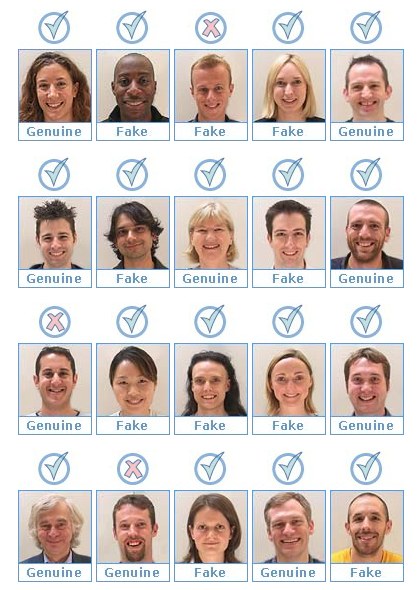TL:DR – Short discussion on whether or not it is easy to spot a fake smile.
Apparently, most people are surprisingly bad at spotting fake smiles, according to the BBC at least (other observers suggest otherwise). One theory as to why this might be is that it is perhaps easier for people to get along if they don’t always know what others are really feeling. But, I’d argue that society would become dysfunctional if most people couldn’t spot most fakers.
Although a fake smile often looks the same in terms of an upturned mouth and sometimes exposure of the teeth, a fake and a genuine smile can be very different. To my eye, a fake smile looks awkward, embarrassed even, regardless of which muscles are being used. It’s also in the eyes. If the eyes aren’t “smiling” you can usually spot a faker.
 The BBC had a nice psychological test, twenty clips of people smiling and you have to decide between genuine and fake. I’m not sure what it says about me that I got 17 out of 20. I’ve embedded an image of my results, if you wanted to go and do the test and then come back to see how we compared, you can see the results full size by clicking the thumbnail. It would be interesting to know whether others got the same ones wrong.
The BBC had a nice psychological test, twenty clips of people smiling and you have to decide between genuine and fake. I’m not sure what it says about me that I got 17 out of 20. I’ve embedded an image of my results, if you wanted to go and do the test and then come back to see how we compared, you can see the results full size by clicking the thumbnail. It would be interesting to know whether others got the same ones wrong.
Scientists distinguish between fake and genuine smiles based on a coding system called the Facial Action Coding System (FACS), it was devised by Paul Ekman of the University of California and Wallace Friesen of the University of Kentucky, USA.
A genuine smile will usually be involuntary, make the mouth muscles move so that we see the familiar upturn, muscles will raise the cheeks, the orbicularis oculi and pars orbitalis contract, making the eyes crease up, and the eyebrows dip slightly. Of course, it’s possible to learn how to emulate these muscular reactions, something actors and sales reps do on a daily basis; unless they’re doing funeral scenes or selling coffins I suppose…